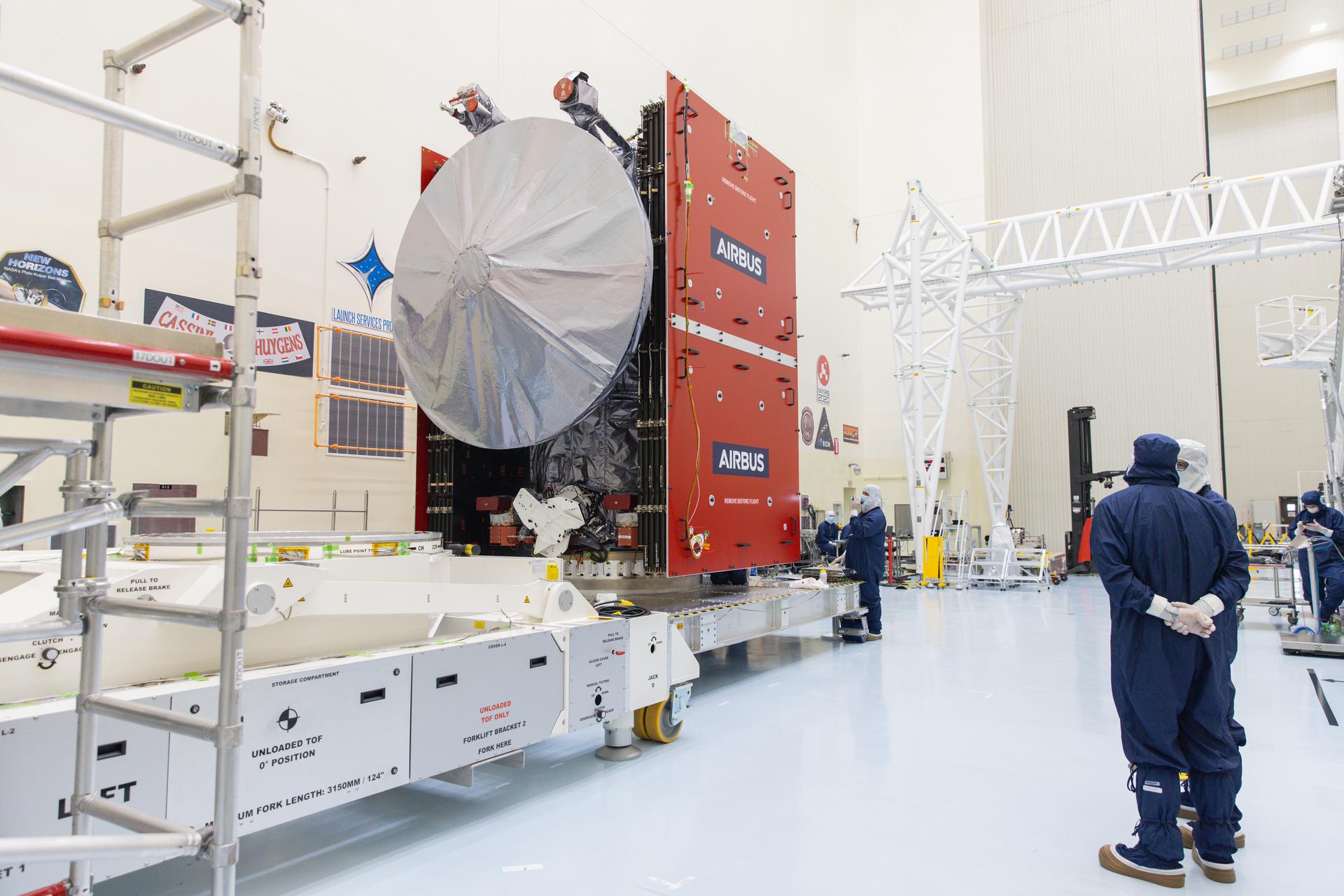NASA will host a prelaunch media teleconference at 5 p.m. EDT Sunday to discuss the agency’s Europa Clipper mission. Earlier in the day, NASA and SpaceX completed a launch readiness review, resulting in a “go” for launch of the spacecraft that will conduct a detailed science investigation of Jupiter’s icy moon Europa.
Coverage of the prelaunch teleconference will stream live on the agency’s website.
Participants include:
- NASA Associate Administrator Jim Free
- Sandra Connelly, deputy associate administrator, Science Mission Directorate, NASA Headquarters
- Jordan Evans, project manager, Europa Clipper, NASA JPL
- Tim Dunn, launch director, NASA’s Launch Services Program
- Julianna Scheiman, director, NASA Science Missions, SpaceX
- Mike McAleenan, launch weather officer, 45th Weather Squadron, U.S. Space Force Space Launch Delta 45
Meteorologists with the U.S. Space Force’s Space Launch Delta 45 Weather Squadron are predicting a 95% chance of favorable weather conditions for launch, which is targeting 12:06 p.m. EDT on Monday, Oct. 14, from Launch Complex 39A.
To learn more about the Europa Clipper mission, visit:
https://science.nasa.gov/mission/europa-clipper
Join the conversation and get updates from these accounts:
X: @NASA, @EuropaClipper, @NASASolarSystem, @NASAJPL, @NASAKennedy, @NASA_LSP
Facebook: NASA, NASA’s Europa Clipper, NASA’s JPL, NASA’s Launch Services Program
Instagram: @NASA, @nasasolarsystem, @NASAKennedy, @NASAJPL




